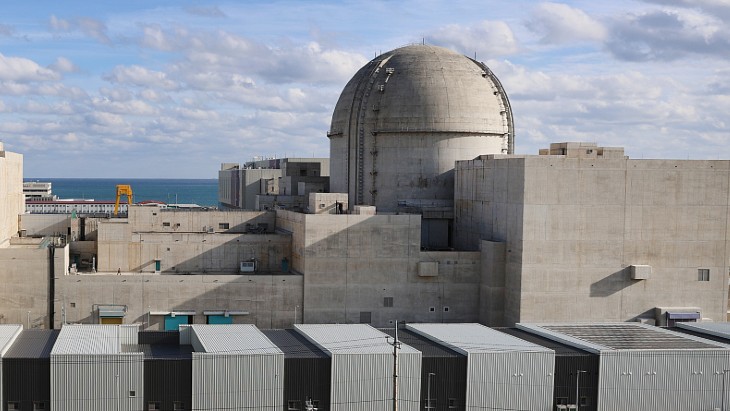The Phase 1 VDR for SMR-160 was carried out at the request of the vendor, Holtec subsidiary SMR, LLC, and began in mid-2018. The CNSC has now concluded that Holtec has, overall, demonstrated an understanding of CNSC regulatory requirements and expectations. The review has identified issues Holtec will have to address in the second phase of the VDR process, but the regulator said these issues were "foreseen to be resolvable".
"This milestone reinforces our expectation that the SMR-160 will meet Canada's regulatory requirements while also providing valuable feedback that will allow us to further improve the design throughout the ongoing regulatory process," said Holtec International President and CEO Kris Singh.
Areas identified by the CNSC for follow-up include: an explanation of how US codes and standards selected in the Phase 1 assessment comply with or meet the intent of Canadian requirements; the implementation of fire protection considerations; methodologies for probabilistic safety analysis; R&D activities to substantiate the fuel qualification programme, including the role of a first-of-a-kind reactor; application of the single-failure criterion to the control systems under all operating conditions; adequacy of the shutdown means under all conditions, including scenarios where the main control room is lost; applicability of selected design standards for containment structures; application of research results in the development of the reactor design; and completeness of the R&D programme to inform long-term reactor operation, including ageing and maintenance of structures, systems and components.
The SMR-160 is a pressurised light-water small modular reactor (SMR), generating 160 MWe (525 MWt) using low-enriched uranium fuel. Holtec envisages manufacturing much of the engineered equipment for the reactor at its Advanced Manufacturing Division in Camden, New Jersey, but also plans manufacturing plants in other SMR-160 host countries. Earlier this year Holtec and Framatome entered into an agreement to enable completion of all necessary engineering to fuel the reactor with Framatome's commercially available and proven 17x17 GAIA fuel assembly.
The three-phase VDR offered by the CNSC is an optional service to verify the acceptability of a reactor vendor's design with respect to Canadian regulatory requirements and expectations. This can enable the identification and resolution early in the design process of potential regulatory or technical issues, particularly those that could result in significant changes to the design. The review does not certify a reactor design and is not a required part of the licensing process for a new nuclear power plant - the CNSC's licensing processes will require a more detailed review of the design and safety case for a specific licence application at a specific site.
SMR-160 is the fourth SMR design to complete the first phase of the VDR process, following Terrestrial Energy Inc's Integral Molten Salt Reactor, Ultra Safe Nuclear Corporation's MMR-5 and MMR-10 high-temperature gas-cooled reactor, and ARC Nuclear Canada Inc's ARC-100 liquid sodium reactor. The Phase 2 review, which goes into further details with a focus on identifying any potential fundamental barriers to licensing the design in Canada, takes about 24 months to complete.

.jpg)





_49562.jpg)





